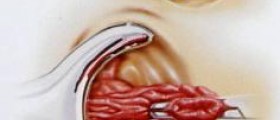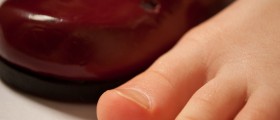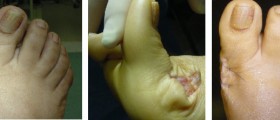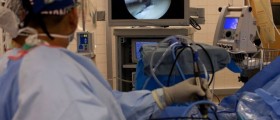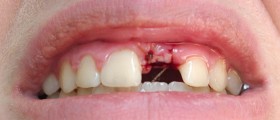An anal fissure is a condition in which the skin of the anus gets torn to variable extents. Although it is not a life-threatening condition, it represents a huge problem because of the severe pain and constipation problems which can occur repeatedly, until it’s surgically managed. Anal fissures are often disabling and cause frequent absences from work, but the severity of the symptoms depend on the depth and the localization of the tissue damage. Regardless of the chosen treatment method, the fissure must heal itself.
Here are some important facts about conservative (non-surgical) and surgical treatment of anal fissures.

Non-surgical Treatment
This can calm down and even heal the anal fissure in some patients with mild symptoms. Additionally, topical application of nitroglycerin ointment can be helpful for anal sphincter relaxation. Another approach in fixing the contraction of the anal sphincter is an injection of botulin toxin in the anal sphincter muscle. The effects can last up to 3 months, and during that time, the anal fissure may heal completely.
Surgical Treatment
If none of the methods above provide satisfying results, your doctor may propose surgery. The procedure which is most commonly performed is called an internal anal sphincterotomy It can be performed under local or general anesthesia, and the result is a small incision in the internal anal sphincter.
Studies have shown that surgical treatment is more effective than conservative treatment and that the recurrence of the anal fissure is less frequent after surgical treatment.
Complications
Right after an internal anal sphincterotomy, less than 10% of persons experience temporary incontinence, which usually normalizes within a few days to few weeks after the surgery. During the recovery period, painkillers may be used for suppressing postoperative pain, although in most cases, the pain after surgery subsides due to decreased pressure on the internal anal sphincter. Infections are very rare, but the proper hygiene and strict compliance with the postoperative instructions play a great role in preventing them. Bleeding is not common in a properly performed procedure, but sometimes it can occur. It is easily managed by an additional minor intervention.
Recovery Period
As we have said, the pain usually gets better right after the surgery. If the procedure is performed under local anesthesia, which is usually the case, the patient can leave the hospital the same day and after a few days of recommended rest, they can return to their usual daily activities. This has become a routine procedure and the risk of complications has been lowered to a minimum.
According to statistical data, the anal fissure reoccurs in 1-5% of patients who underwent surgery. However, they have found that most of those patients already suffered from some chronic inflammatory bowel diseases, such as Crohn's disease.
- Nelson RL, Thomas K, Morgan J, Jones A. Non surgical therapy for anal fissure. Cochrane Database Syst Rev. 2012 Feb 15.(2):CD003431. doi: 10.1002/14651858.CD003431.pub3.
- Nelson R. A systematic review of medical therapy for anal fissure. Dis Colon Rectum. 2004 Apr. 47(4):422-31. Epub 2004 Mar 4.
- Jonas M, Scholefield JH. Anal fissure. In: Holzheimer RG, Mannick JA, editors. Surgical Treatment: Evidence-Based and Problem-Oriented. Munich: Zuckschwerdt. 2001. Available from: https://www.ncbi.nlm.nih.gov/books/NBK6878/
- Photo courtesy of SteadyHealth



